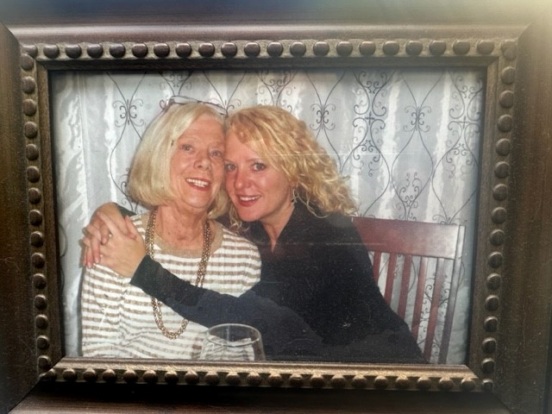Care Planning, Caregiving, COVID, Needs Navigation, Palliative Care

NPAF Volunteer, Julie Wallace, shares her perspective on how to go about starting a care plan. Read her heartfelt post below.
As part of the Be a Hero, Make a Plan campaign, we are capturing perspectives that get to the essence of why care planning is important. To learn more about care planning, download our care planning guide.
I have been part of the Advance Care Planning trend here in West Michigan since it got started back in 2012 both on the hospital and the community side. I also sit on a biomedical ethics committee for the same healthcare system which has given me a unique vantage point from which to observe our progress over the years since much of what we deal with are complex cases involving patients who lack competence, clarity or consciousness and who seem to come with an abundance of family and strong conflicting opinions or no one at all. Situations like these create havoc with medical staff sifting desperately through the layers of complexity in an effort to deliver quality care. When there’s an advance directive, we give a collective sigh of relief. When there isn’t, we collectively shake our heads.
If there can be silver lining to this pandemic, it’s that it has forced us to consider the implications of facing a life-threatening illness in complete isolation. If you’re like me, your imagination has wrangled with the realistic potential of having to choose between being on a ventilator, alone, in a makeshift ICU or certain death. Would we… could we do it? What if we became too sick too soon to make our voices heard? Who would make that decision and what would the answer be? From what I witnessed this past year as part of my volunteer service, it seemed so much of the anguish suffered by the patients and families could have been eased by good care planning. So what are you waiting for? Make a commitment today to be a hero, to yourself, to your loved ones and to your healthcare community.
Let me offer some observations I’ve made that might help ease you into the process and help you along the way.
First. Your care plan is not a stone tablet.
It is a signal, a sign to your healthcare providers that you have put great thought and consideration into things most precious to you and that you have made certain choices and decisions when it comes to your life and your death. The healthcare professionals I work with consider a patient’s care plan an invitation to connect on a deeper level. It offers them a unique patient perspective and a launch point for further discussion. You are not issuing an edict for doctors to follow without question. You are opening the door to quality care as you define it.
“You are not issuing an edict for doctors to follow without question. You are opening the door to quality care as you define it.”
Second. Getting Started.
Make a date with yourself, grab a notebook and head for the woods, a park, your balcony or back patio and take a quick snapshot of your life. What drives you? What gets you out of bed each day? What constitutes YOUR best life? Is it children, family, music, writing, baseball, work, running, quilting, learning, reading, basketball, video games, religion? No list is too great or too short, as long as it’s yours.
Now take a moment at the other end of the spectrum and think about what might matter to you in a health crisis. Don’t dwell. This is a top-of-mind exercise. Just capture your gut responses… hospice at home, my dog in the hospital, casket, no casket, burial, cremation, gospel, traditional, medieval, this reading, that poem, a suit, my favorite sweater, a wake, this park, that church, my mosque, that hymn, aunt Celine, probably not cousin Randolph.
Rather not go it alone? There are great online resources to get you started, including NPAF’s new care planning guide, that includes worksheets and helpful prompts for people to think about what matters most to them. I still love the “Let’s Talk Turkey” concept from The Conversation Project which takes advantage of a family feast to get the stories and thoughts flowing. The “Hello” game also promoted here by NPAF is another light and nonthreatening way to generate conversation with friends or family. Belong to a book club? Atul Gawande’s, “Being Mortal” and the beautiful work of Paul Kalanithi, “When Breath Becomes Air,” are powerful thought-provokers guaranteed to generate rich conversation.
COVID presented an unexpected opportunity for my partner and me. During lockdown last spring, we took the concept of social distancing to the extreme by walking our dogs in the village cemetery late in the evening. In the process, we naturally found ourselves reflecting on the end of life and what that might look like for each of us. Some of these discussions even led us to make some changes to our existing care plans.
No matter the method you choose, don’t forget to capture your thoughts. They will become the bones of your formal care plan.
Third. Who speaks for you?
Whatever you may call it: Backup Person, Patient Advocate, Patient Representative, Ombudsmen, Durable Power of Attorney for Healthcare, etc., this will be the most important choice you make when creating your plan. Take your time and think it through. Here are some important considerations:
Share your work
Once completed, share your plan three ways:
By combining a physical care plan with a robust conversation you are creating a winning combination guaranteed to make you the hero you set out to be.
Good luck and good planning.
Julie Wallace is a NPAF volunteer and a resident of Michigan.
Care Planning, Caregiving, COVID, Needs Navigation, Palliative Care
Care Planning, Caregiving, Health Literacy, Trust
Care Planning, Health Literacy, Project Innovation
Care Planning, Caregiving, Health Literacy, Insurance, Needs Navigation, Trust



